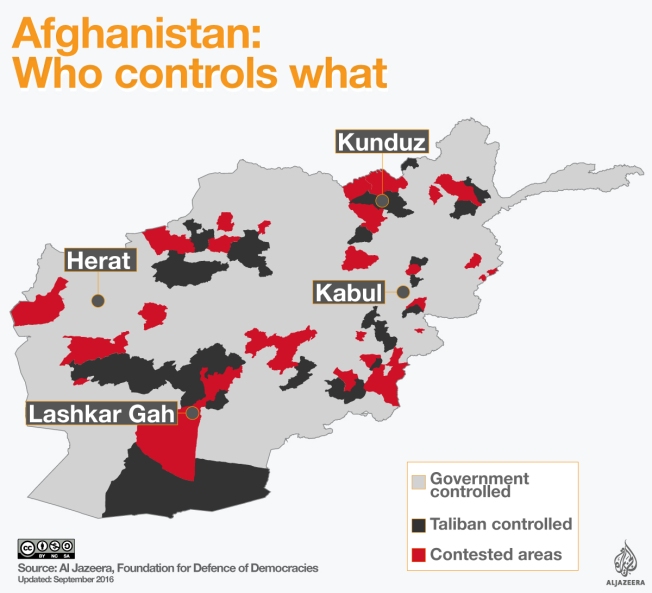As mentioned in the previous posting about the recent events in Pakistan, both Afghanistan and Pakistan have been affected gravely by war and violence in the last decade. Afghanistan has also faced internal strife in the last few years as a result of the rise of the Islamic State. The Islamic State also known as ISIS and ISIL, the Islamic State of Iraq and Syria and the Islamic State of Iraq and the Levant respectively, are commonly referred to as Daesh. The Islamic State was formed by a group of individuals that use Salafi Islam, a sect of Sunni Islam, to give grounds to their violent behaviour towards minorities who are considered to be heretics and to justify their goal of building a Caliphate.
Afghanistan is no stranger to oppressive regimes and leadership structures and religious fundamentalism in its history. Despite this, the Afghan President, Ashraf Ghani, has waged a war on ISIS and has been quite successful in defeating them in the Eastern part of the country where they were known to have infiltrated certain provinces.
ISIS’ violence in Afghanistan and other countries in the Middle East and South Asia has generally been targeted towards members of minority communities such as Yazidis, Ahmadis, Zaidis, and Shia as they are considered to be “infidels,” “apostates and “heretics” as per the ISIS based on Salafi ideology.
On Sunday the 24th of July, two ISIS suicide bombers killed upwards of 80 peaceful civilian protesters, and injured 200 others. This attack was the most fatal one since 2001, which is when the Taliban insurgency began. This lead to a day of mourning as declared by the government and the interior ministry motioned to ban public gatherings in order to avoid attacks like this one. The gathering was described to be a “Shia gathering” as most of the protesters belonged to the Hazara community. Hazaras mainly live in Afghanistan, Balochistan and Karachi and are considered both ethnic and religious minorities, as they belong to the Shia sect of Islam. Their minority status makes them targets for ISIS-led violence, and since they are losing their presence in Afghanistan, they want to stay relevant. To read more please visit this link.
In an article in Al Jazeera, the writer addresses how recent conflict in Afghanistan has resulted in decreased national security and significantly diminished the livelihood of those who depend on their harvests. There has been a wave of economic migrants that have left Afghanistan for better economic opportunity, but have returned due to being unwelcome in the countries that they migrate to. The article states that out of the 384 districts in Afghanistan, over 300 are not secure. This has resulted in 1.2 million individuals being internally displaced across safer provinces. The article also reports that out of the 300 districts that have been rendered not secure, 10 have no governmental infrastructure at all. The militant insurgency and ISIS are long-term effects of the US invasion in Afghanistan, this leaves returnees, members of minorities, teachers, journalists, judges, lawyers, political activists and farmers at risk. Read more here.
Although the Taliban controls a fraction of what it once used to, they are still considered to be a threat by the United States and Afghanistan alike. On September 19th the US lead an airstrike, which killed eight Afghan police officers instead of actual threats such as Taliban leadership, was described by the US as either a mistaken set of coordinates or the security forces getting caught in the middle. More information on this event can be found here.
This image provides a visual understanding to who controls what in Afghanistan and more information can be found at this link.
